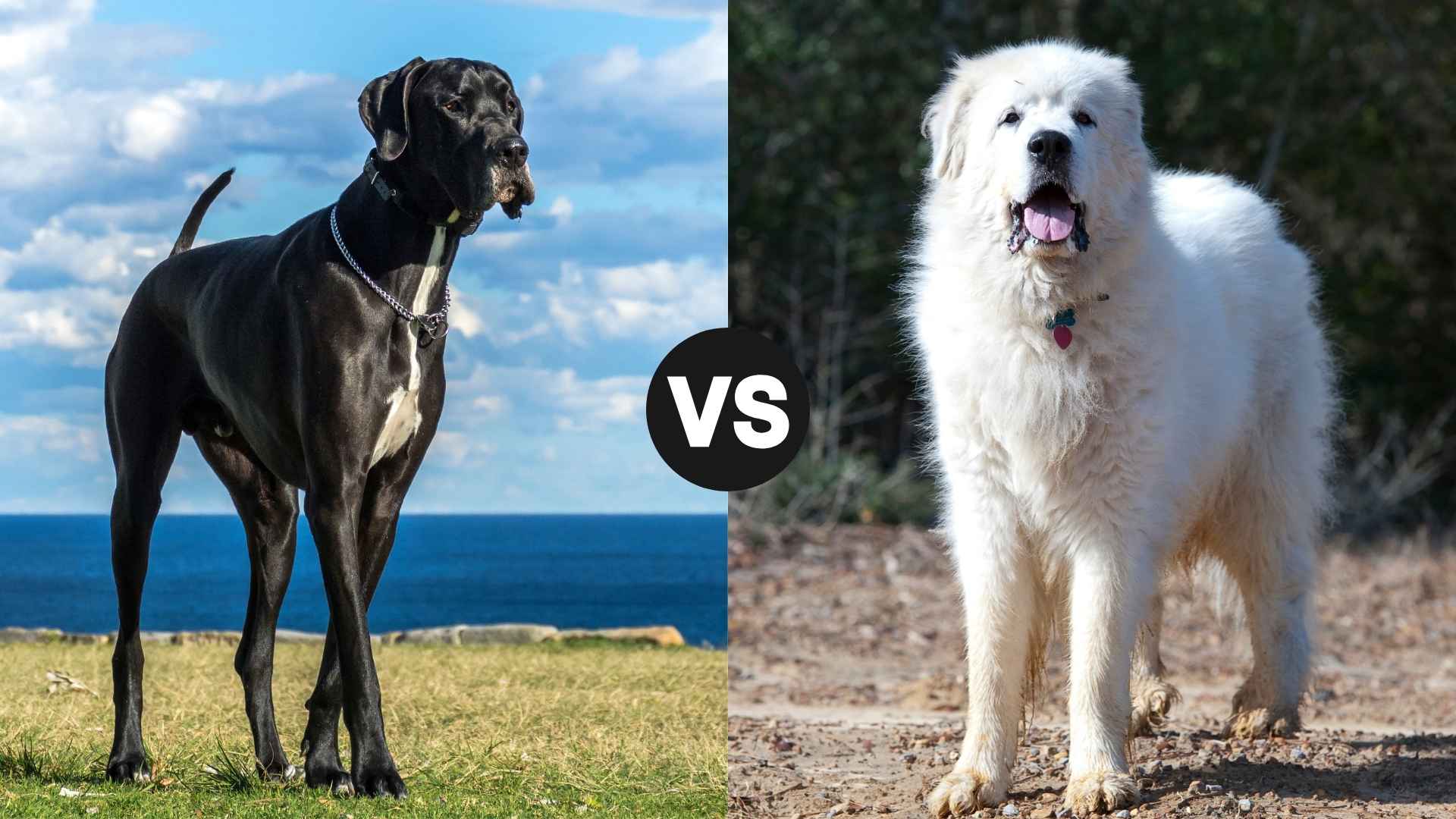When it comes to massive dog breeds with an equally grand presence, few can rival the Great Dane and the Great Pyrenees. Fittingly, both breeds have “Great” in their names—and for good reason.
The Great Pyrenees is a calm, highly intelligent guard dog breed known for its thick, white coat and gentle, watchful eyes. Originally bred to protect livestock from fierce predators like wolves and bears, these large dog breeds bring both power and patience to the table.
On the other hand, the Great Dane is a true giant of the canine world—so much so that it’s often called the “Apollo of Dogs.” Bred to hunt wild boars, Great Danes are not only tall and strong but also affectionate and loyal family companions.
So, when comparing the Great Dane vs Great Pyrenees, which breed best suits your lifestyle? Keep reading as we break down their differences in size, temperament, care needs, and more.
Great Dane vs. Great Pyrenees
The Great Dane is a towering, elegant breed that originated in Germany over 400 years ago, primarily for boar hunting and estate guarding. This big dog combines strength, alertness, and a surprisingly affectionate nature.
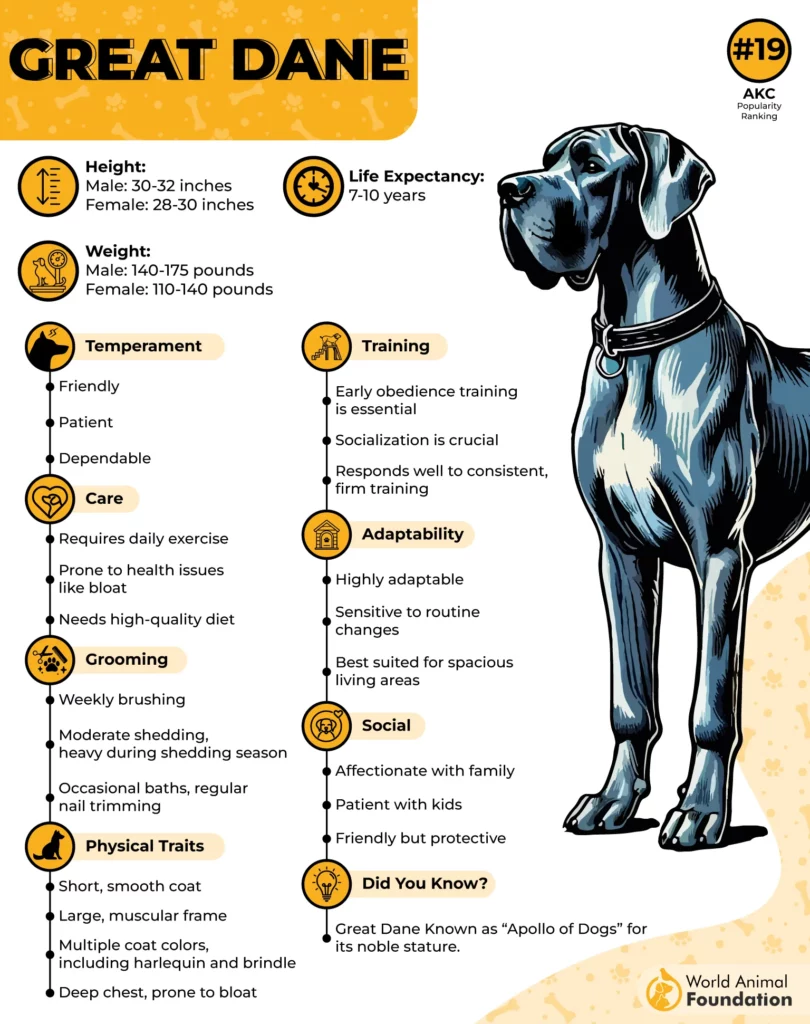
Despite their intimidating size and square-jawed presence, Great Danes are friendly, dependable, and can be great family pets. They sport a sleek, short coat in a variety of colors, including fawn, black, brindle, harlequin, and mantle. While the breed’s name hints at Danish roots, its true origin is German, where it’s known as the Deutsche Dogge (German Dog), states WebMD.
In contrast, the Great Pyrenees is a calm and patient livestock guardian breed, bred to protect flocks in the snowy Pyrenees Mountains between France and Spain. They have a thick, white coat or white with markings of beautiful shades of gray, tan, reddish-brown, or badger. It offers camouflage and protection from harsh weather.
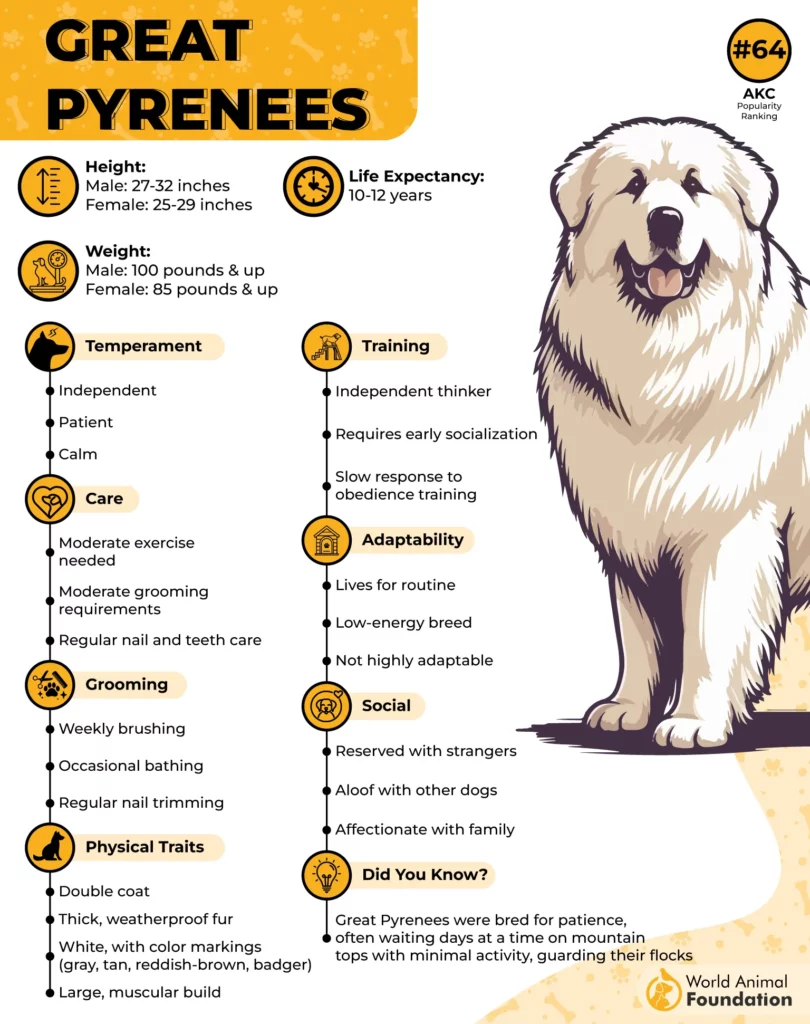
These dogs were historically used to fend off predators like wolves and bears. Believed to have ancient roots near modern-day Turkey, they arrived in the U.S. as early as the 1600s. Though powerful and imposing, Great Pyrenees dogs are gentle, loyal, and especially devoted to their families.
Size and Weight Overview
The Great Dane holds the title of the tallest working dog breed, with a typical height ranging from 28 to 32 inches at the shoulder. Exceptionally large individuals, like the famous Zeus, have reached heights of 41 inches and stood over 7 feet tall on their hind legs, and hold the Guinness World Record.
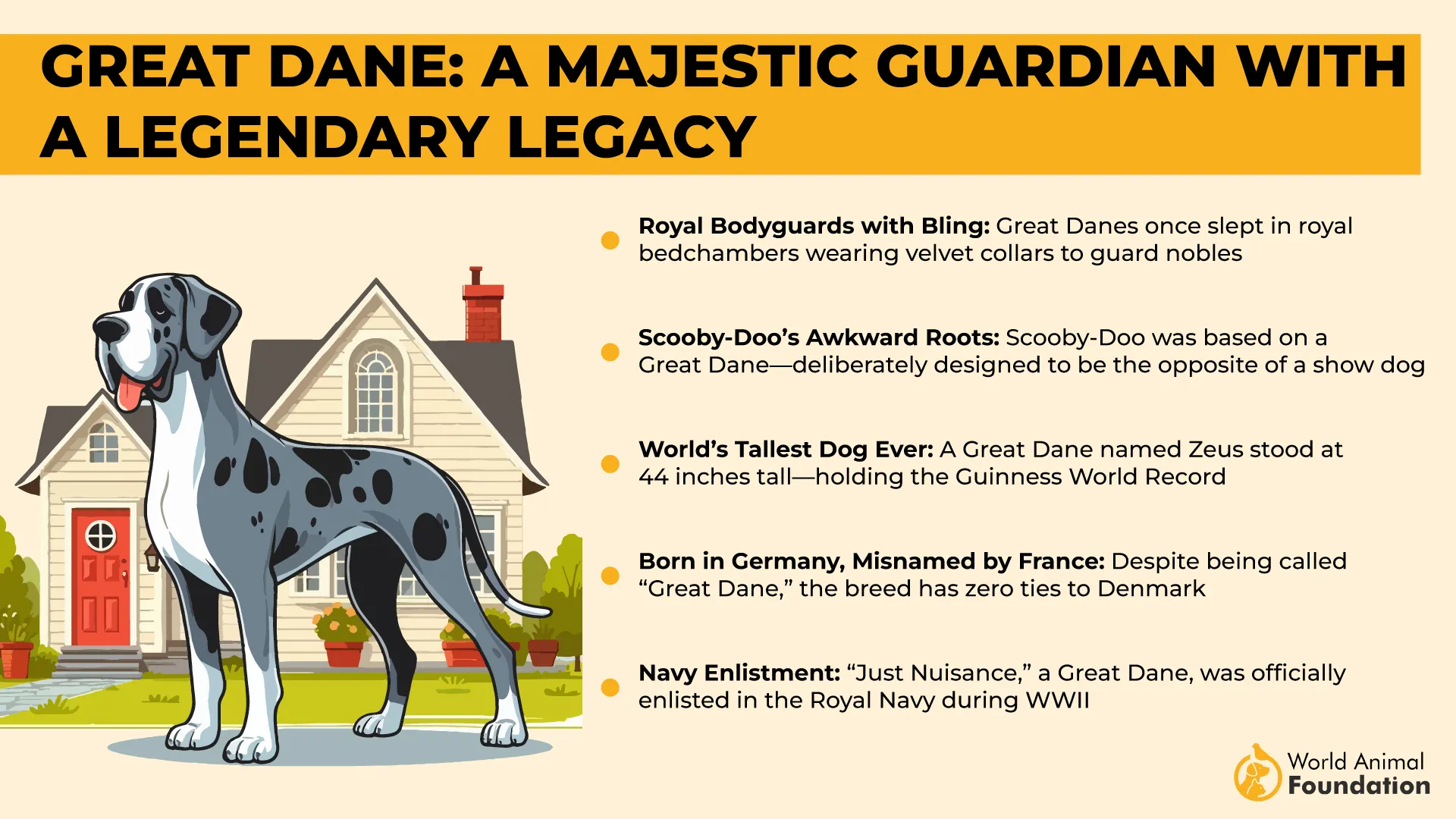
These gentle giants are also quite heavy, weighing between 110 and 175 pounds, with males generally on the higher end. Great Danes grow rapidly in their early months, so owners should be prepared for a fast-growing pup that quickly fills out into a massive, elegant dog.
The Great Pyrenees, while slightly shorter, is equally impressive in stature. Bred to protect livestock from large predators, this breed stands around 25 to 32 inches tall and boasts a solid build.
Female Great Pyrenees typically weigh around 85 pounds, while males often exceed 100 pounds. Their thick, weather-resistant coats add to their powerful presence, making them appear even larger than their measured height and weight suggest.
Dietary Needs and Weight Management
Great Danes need a specially formulated large-breed diet, especially during their rapid growth phase. Puppies should stay on large-breed puppy food until 18 months to support healthy bone development and avoid orthopedic issues.
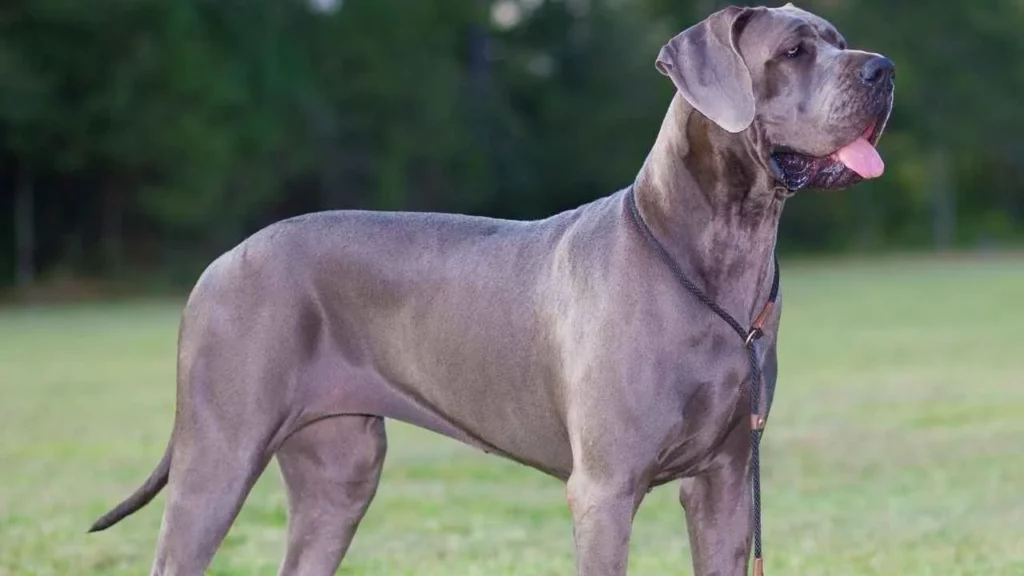
Adult Danes benefit from meals rich in glucosamine and chondroitin for joint health and should eat multiple small meals daily to reduce bloat risk. Avoid overfeeding, and keep treats under 10% of daily calories to prevent weight-related joint problems, states PetMD.
Great Pyrenees also need a high-quality diet tailored to their size and activity level. Due to their large build, they consume more food than smaller breeds, making cost a factor. While there’s no strict feeding rule, vet guidance and label instructions help ensure balanced nutrition.
Joint-supportive supplements like glucosamine, chondroitin, and omega-3s are beneficial for mobility and coat health. Regular weight checks with a vet can help prevent joint stress and dietary imbalances, states PetMD.
Personality and Temperament Traits
The Great Dane is the classic “gentle giant”—friendly, affectionate, and extremely loyal with a calm nature that suits most families. Despite their size, they are easygoing and sociable, welcoming guests and other dogs. They enjoy playing but tire quickly, making them great for families who like short activity bursts followed by rest.
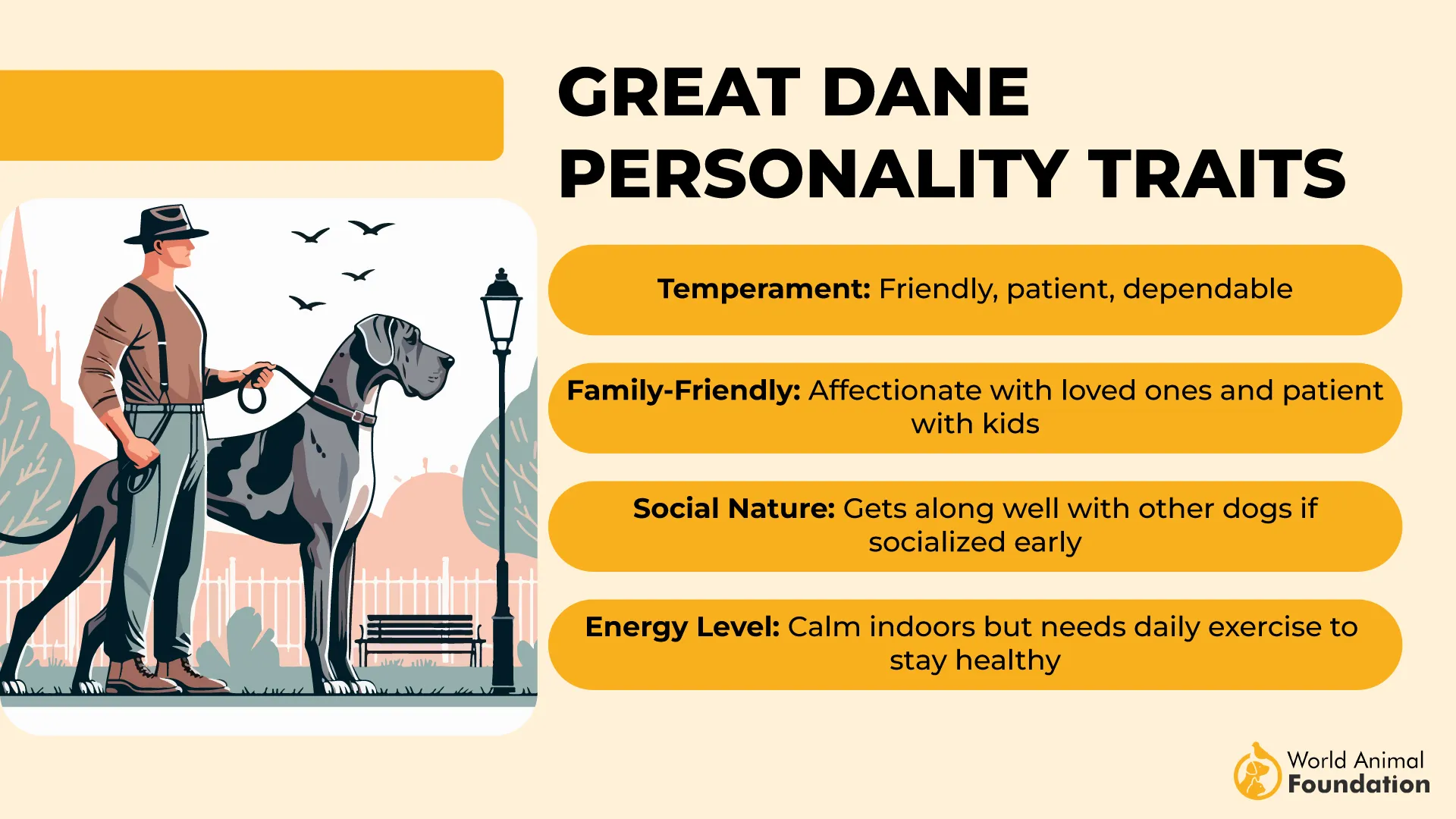
Though obedient, they learn slowly and need patient training. Protective but not aggressive, their presence deters intruders. However, their size can overwhelm small children or seniors without proper supervision.
The Great Pyrenees is a calm, affectionate dog with strong guardian instincts. Patient and devoted, they bond well with families and usually get along with kids and pets if introduced properly. As independent thinkers, early training and socialization are essential.
Their serene nature suits peaceful homes, but they are alert and may bark often to signal anything unusual. Despite vocal tendencies, they enjoy a quiet life with moderate exercise and plenty of downtime with their humans.
Energy Levels and Exercise Requirements
Despite their calm nature, Great Danes need consistent daily exercise to stay healthy. Two brisk walks per day usually suffice, though many enjoy agility, obedience, or tracking. They can join jogging or hiking once fully grown (after age 2) to protect developing joints.
To reduce bloat risk, avoid vigorous activity around mealtimes. With a strong scent drive, they should always be leashed or in secure areas. Great Danes thrive on a routine that combines physical and mental stimulation.
The Great Pyrenees has a more relaxed energy level, fitting its role as a livestock guardian. They conserve energy for protecting their territory but still need regular walks and moderate exercise.
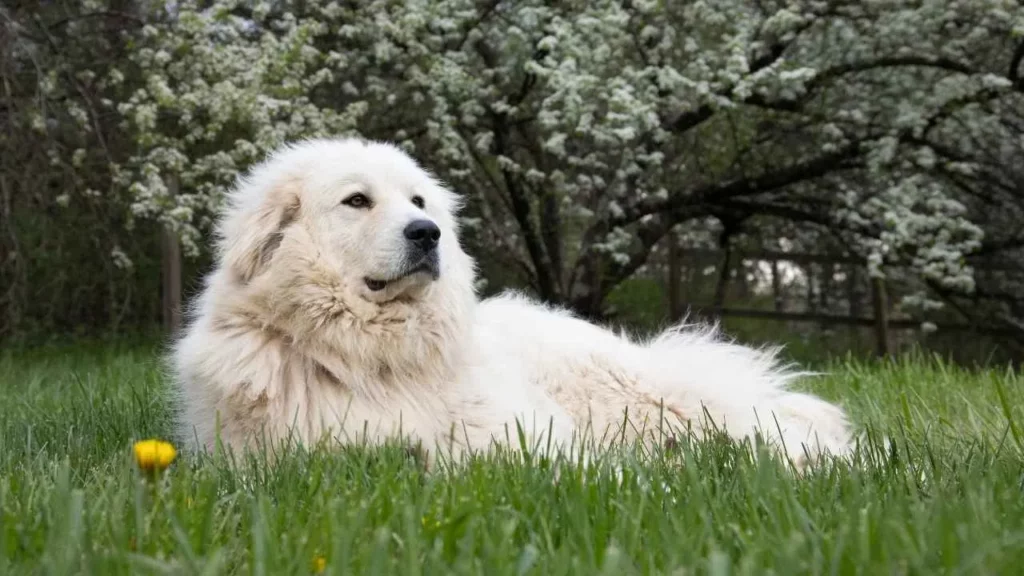
While not overly active, Pyrs benefit from activities like cart-pulling and obedience training to keep both mind and body engaged. They prefer purposeful exercise and enjoy having space to roam and a “job” to do, such as watching over their family.
Health Considerations and Lifespan
The Great Dane has an average lifespan of 7 to 10 years and is prone to serious health issues like gastric dilatation volvulus (GDV), a life-threatening stomach twist. Preventive steps include feeding smaller meals and sometimes surgical gastropexy. They’re also at risk for cardiomyopathy.
Feeding large-breed puppy formula helps reduce rapid growth problems such as hip dysplasia. Regular vet visits, joint supplements, and weight management are crucial for their health and longevity, states Britannica.
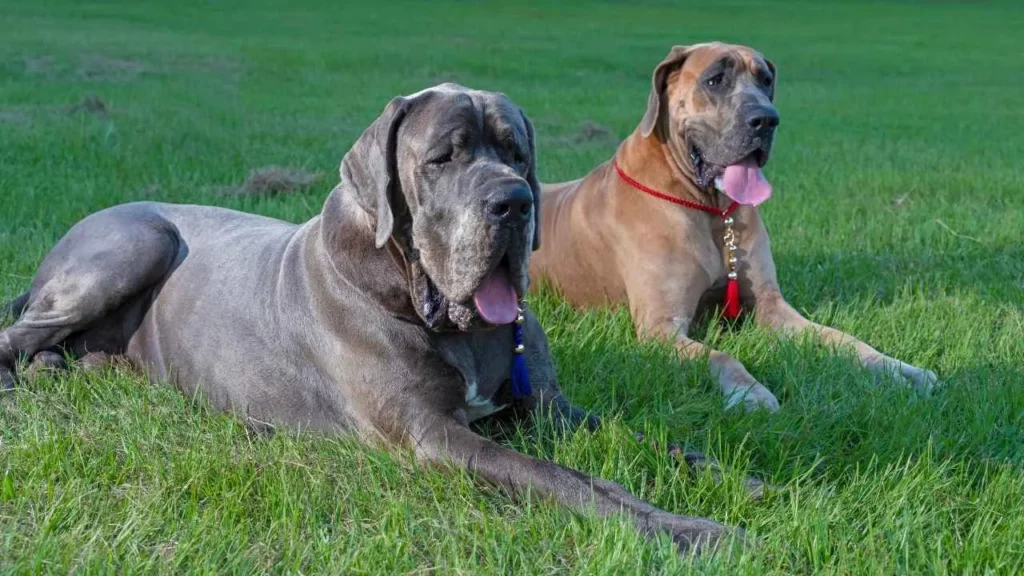
The Great Pyrenees usually lives 10 to 12 years, but faces its own health challenges. Like Danes, they’re prone to bloat and GDV. White coats make congenital deafness more common, and eye issues like cataracts, entropion, and multifocal retinopathy can occur.
Joint problems such as hip/elbow dysplasia, luxating patella, and neuronal degeneration may affect mobility. Regular screenings, proper diet, and early vet care are essential for managing these risks.
Grooming Requirements and Allergy Sensitivities
Despite their large size, Great Danes have low-maintenance grooming due to their short, smooth coat. Shedding is moderate year-round but increases seasonally. Weekly brushing with a rubber mitt, hound glove, or medium-bristle brush helps control shedding and maintain coat health.
As noted by AKC, more frequent grooming is needed during heavy shedding. Baths are only necessary when dirty, and nails should be trimmed regularly to avoid discomfort. While not a hypoallergenic coat, their short coat is easier on allergy sufferers than long-haired breeds.
The Great Pyrenees has a thick, double coat that resists dirt and tangles but sheds heavily, especially in spring or after whelping. Weekly brushing with a slicker or pin brush is necessary to manage heavy shedding, with more frequent grooming during peak times.
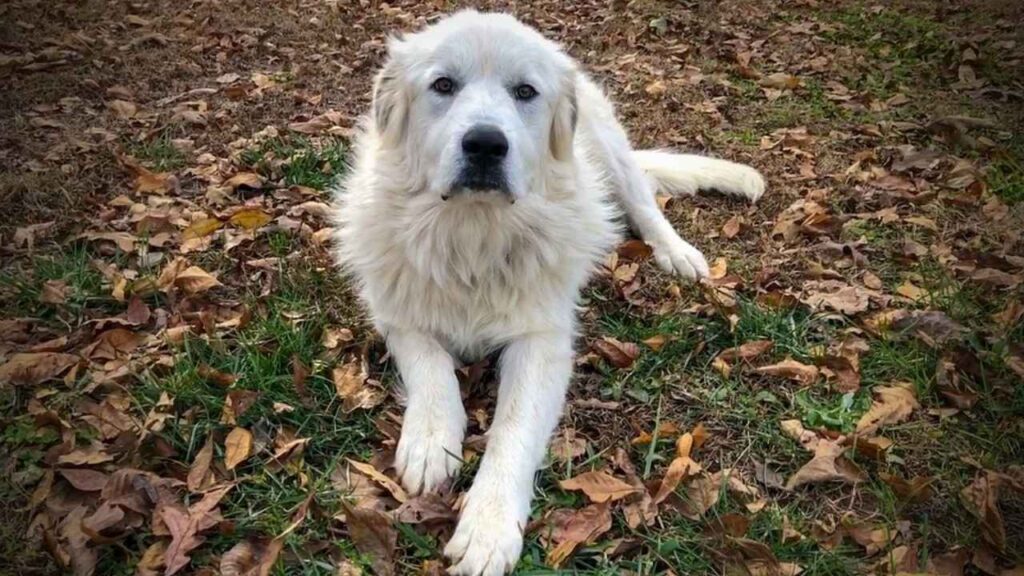
Their outer coat is somewhat self-cleaning, but nail trimming and dental care remain important. Due to significant loose fur and dander, Great Pyrenees are not ideal for allergy-sensitive houses, as their shedding is intense and year-round.
Conclusion
Great Danes and Great Pyrenees are two remarkable large breed dogs, each with distinct traits to fit different lifestyles. The Great Dane, with its friendly nature and striking appearance, tends to get along well with strangers and other animals, ideal for families who enjoy the dog park or cozy time on the couch with toys.
In contrast, the Great Pyrenees is a patient guardian, perfectly suited to protecting the backyard and family at night. Though sometimes confused with breeds like the English Mastiff or mistaken for crossbreeds, both dogs have rare qualities that responsible breeders help you discover.
Understanding their unique needs ensures you find the right brother for your home. We hope this guide helps you avoid the wrong fit and welcome a loyal companion who will bring joy and unforgettable moments to your life.


